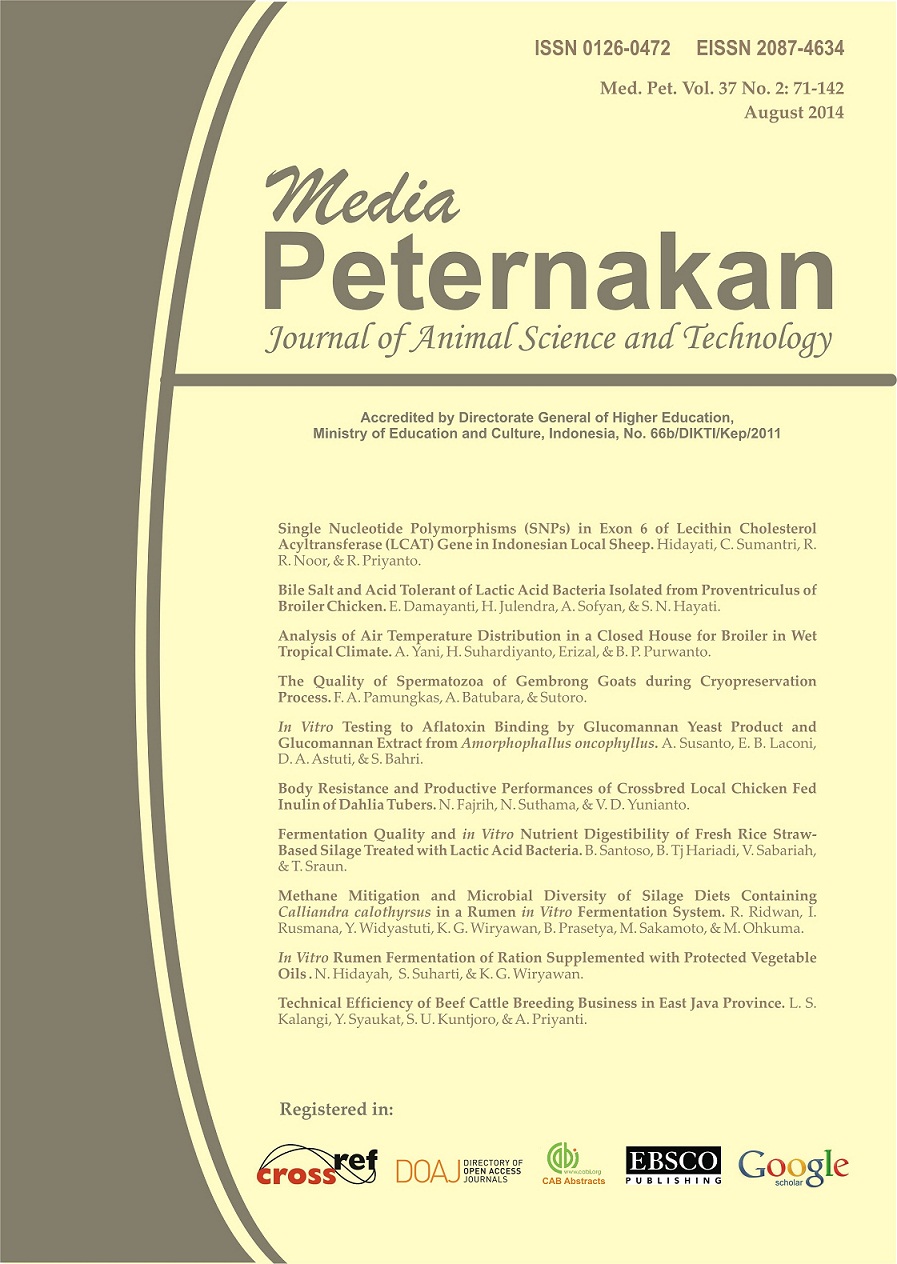In Vitro Rumen Fermentation of Ration Supplemented with Protected Vegetable Oils
DOI:
https://doi.org/10.5398/medpet.2014.37.2.129Abstract
This experiment was designed to evaluate the effects of protected vegetable oils supplementation on in vitro fermentation characteristics, rumen microbial population, and methane production in cattle. The treatments were arranged in a complete randomized block design involving 2 factors i.e. oil type (sesame, canola, and flaxseed) and protection methods (non protected, calcium soap, and microencapsulation). Variables observed were rumen pH, N-NH3, total and molar proportion of VFA, dry matter and organic matter digestibility, population of protozoa and total bacteria, methane production, and hydrogen balance. Data were tested using Analysis of Variance (ANOVA) and the differences among treatments means were examined by Duncan Multiple Range Test. The oil type did not affect all variables measured. The protection method using microencapsulation significantly increased N-NH3 concentration. There was an interaction between oil type and protection method on total VFA concentration, molar proportion of VFA, and methane production. The supplementation of calcium soap-flaxseed oil significantly increased total VFA production, while the supplementation of microencapsulated flaxseed oil had the highest propionate concentration and H2 utilization, the lowest A:P ratio, and methane production. It is concluded that microencapsulated flaxseed oil was the best treatment to optimize rumen fermentation.Downloads
Download data is not yet available.
Downloads
Published
2014-09-25
Issue
Section
Articles



